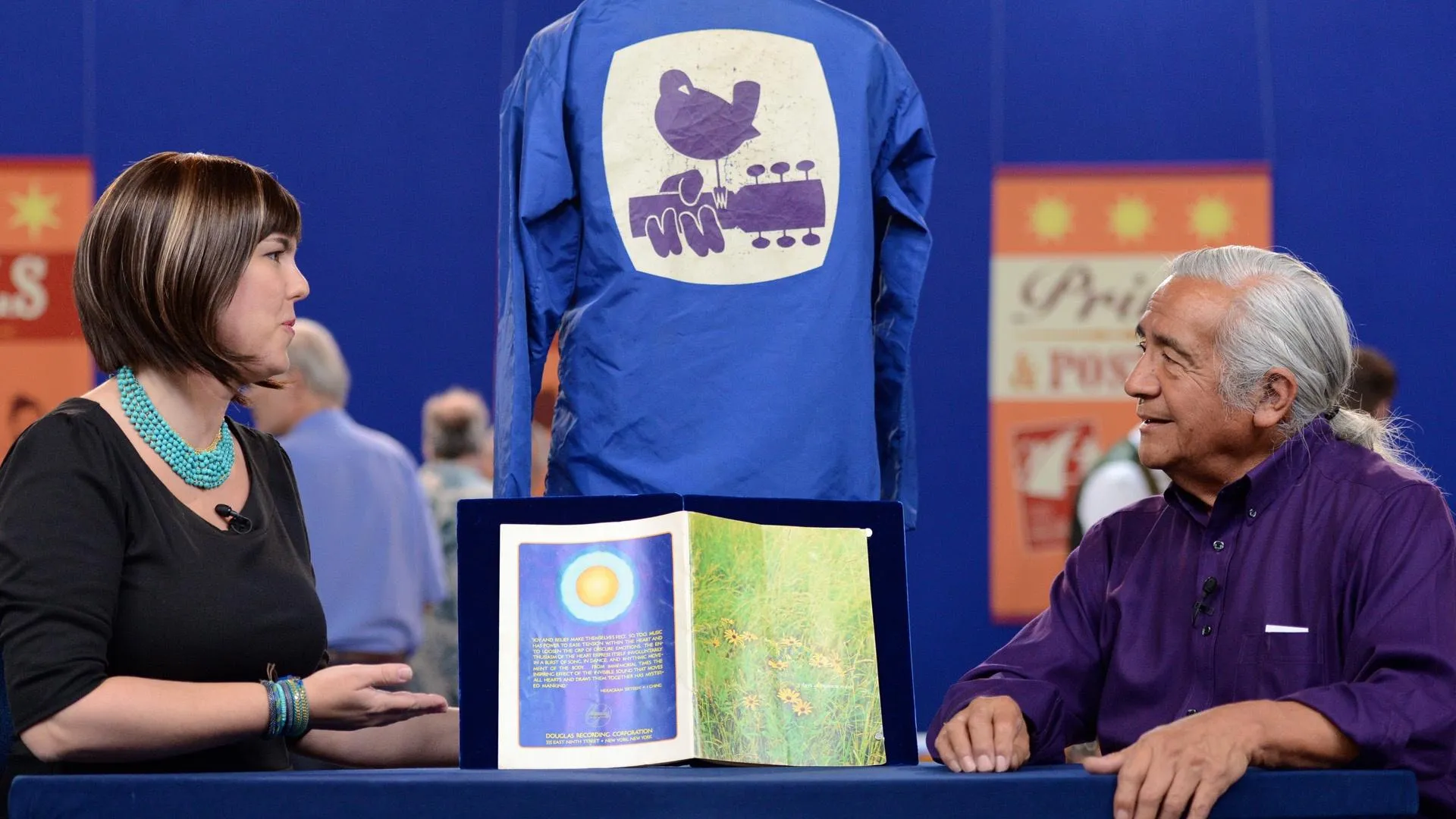GUEST: I know they're vintage concho belts, which means they're Navajo. They came to me through a friend before he died, he gave them to me. I suspect that this one's older, but I don't know any more than that.
APPRAISER: Why do you think this one's older?
GUEST: Because it's plainer. Just looking at some of the tool marks where the leather goes through, I mean, those almost look like they were cut with a cold chisel.
APPRAISER: Right.
GUEST: And I look at this one and the stamps are a lot more complicated, and these... It just looks simpler.
APPRAISER: There's a reason it looks like it was cut with a cold chisel-- it was. Here's how these things evolved. Originally, this would have been a Spanish bridle concho. And so when the Spanish, they were here by the late 1500s, they were here in quantity, there was a lot of people from Spain here in the 1600s, and in the 1700s, this was New Spain. And these caballeros had bridle conchos on the cheeks that would have been round. And the Navajo copied the bridles and made their own versions, and they also used the conchos to decorate other things. When they became belts, they became oval, because the original bridle conchos were round. And they looked basically like this, just round, and the bridle was threaded through a slot. And you're right, this one's older. And it probably dates to about 1880.
GUEST: 1880?
APPRAISER: Some time in the 1880s. On the buckle down there, that's a silver buckle. Sometimes you see 'em with an iron harness buckle. The top one is a more advanced belt, you're right. It was a Platero, a major silversmith who knew how to raise the metal, he knew how to stamp it, how to chisel it and cut it to make those beautiful designs. The buckle is an entirely different level of workmanship than the buckle over here.
GUEST: Yeah.
APPRAISER: The top one probably dates to between 1900 and 1910.
GUEST: So it's that early, too?
APPRAISER: Yeah. The tradition of silversmithing and the way it's done does go straight back to Spain, and it was in Bosque Redondo when they were in the internment camps down south of here, that you begin to see a lot more silversmithing as opposed to just Spanish gear. The bottom one, if it came up for sale at a good auction these days, I think it would bring somewhere between $8,000 and $12,000. So, a significant amount of money. Because of the quality of the top one, if it came up at a public auction, I would think it would bring $6,000 to $8,000. Because the workmanship is just superb and it's great to see Navajo silverwork of this quality come in in Albuquerque.
GUEST: Well, I've got a grandson that's gonna be born in two weeks.
APPRAISER: Wow.
GUEST: So, he gets those. That's a bigger deal than the belts.
APPRAISER: Yeah, it is. Congratulations.
GUEST: We're pretty excited.












